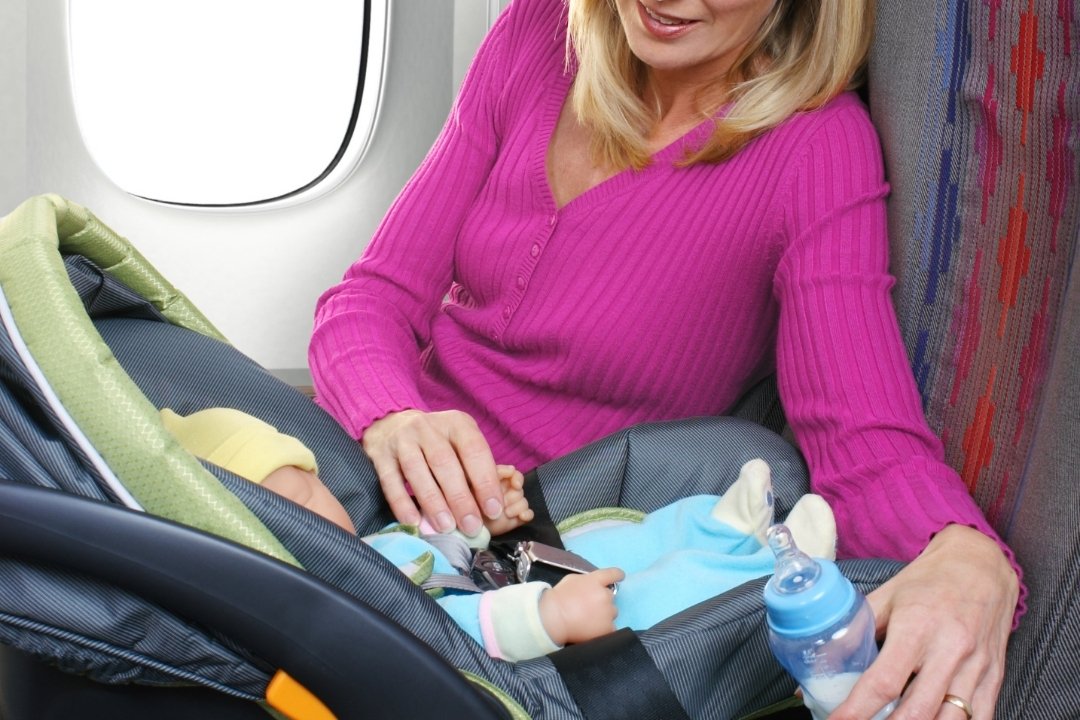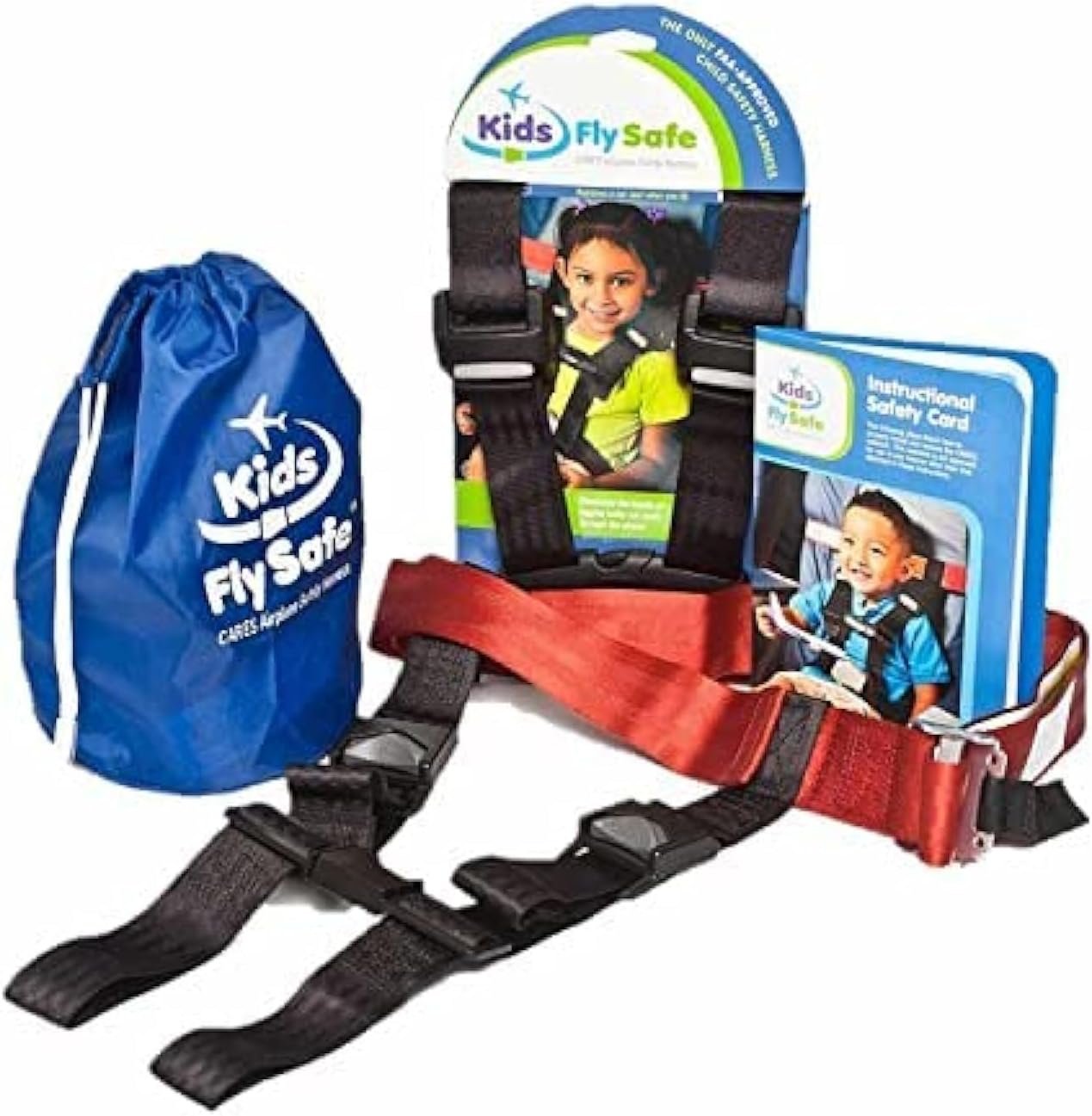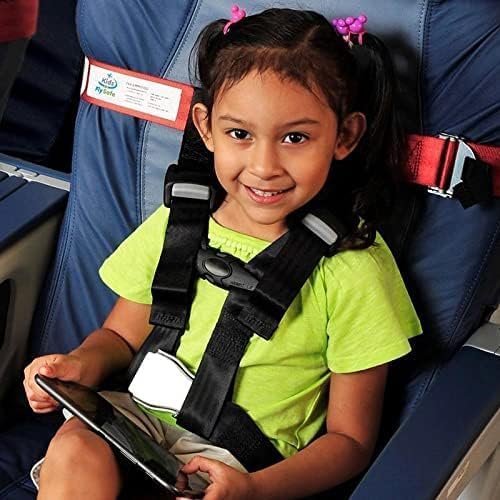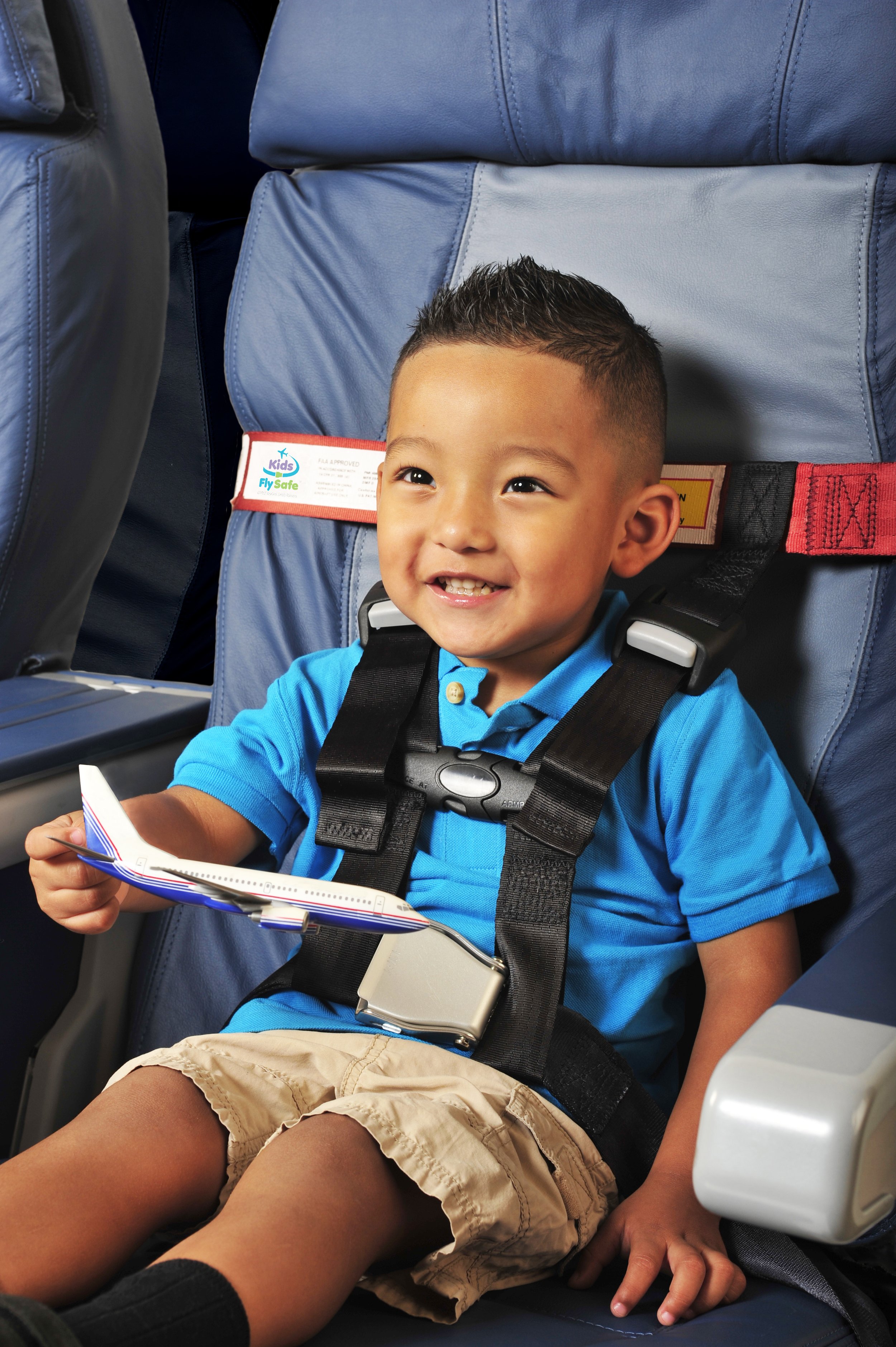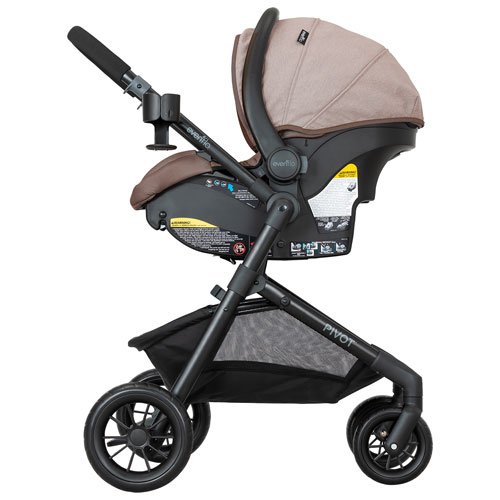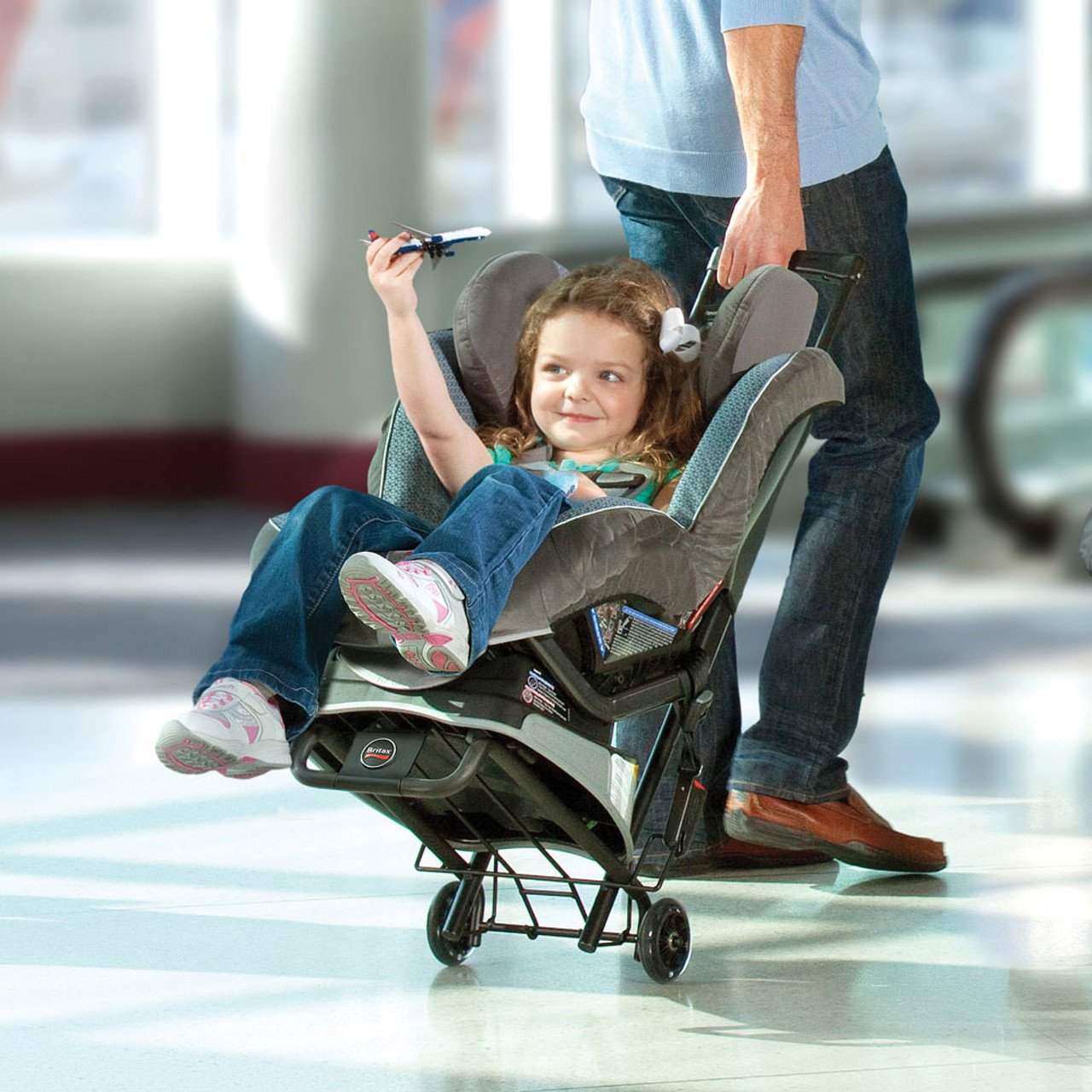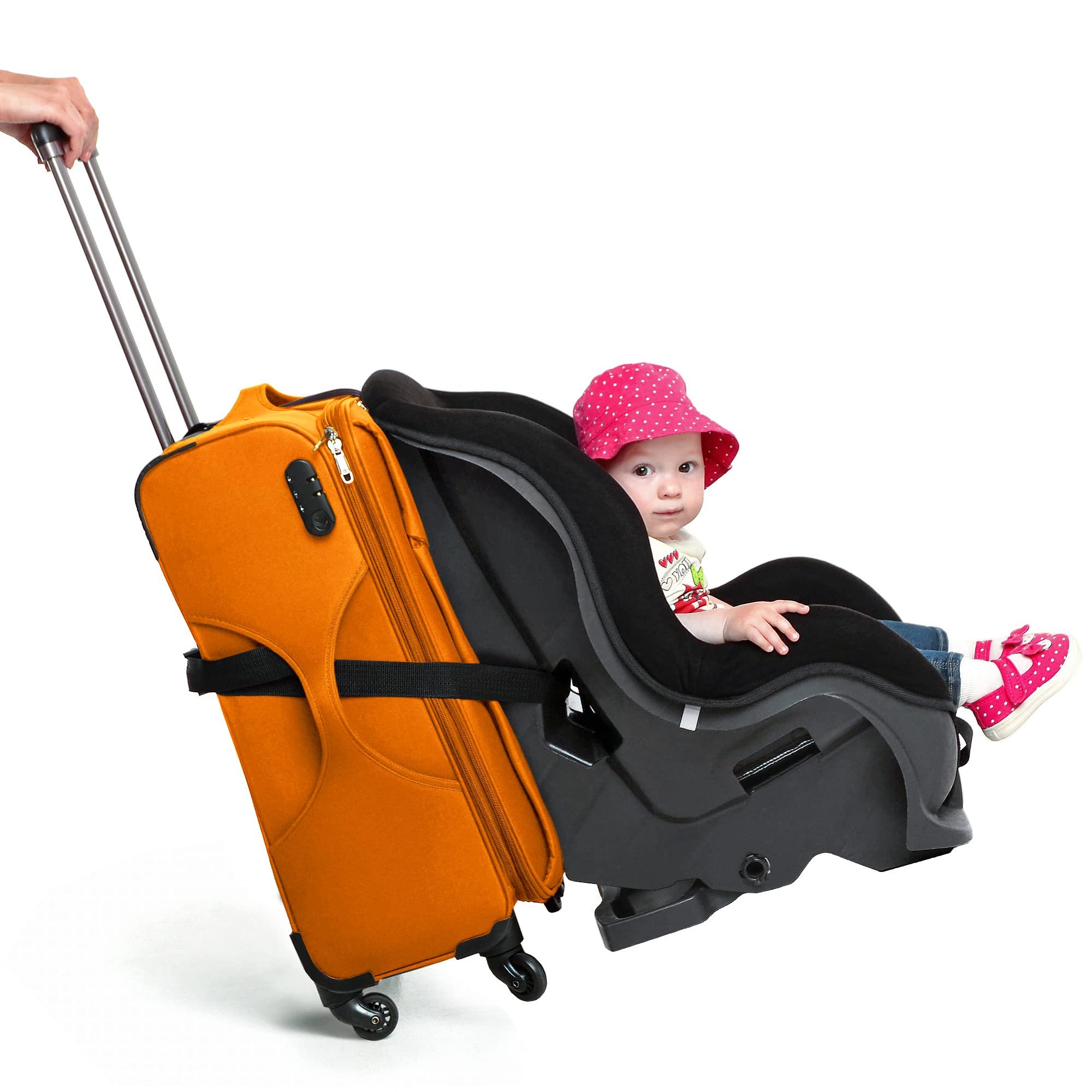Flying Safely with Your Child: A Guide to Using Car Seats on Airplanes
Air travel with young children can be challenging, but ensuring their safety is paramount. In this guide, we'll explore the reasons why bringing a car seat on a plane is essential and provide you with practical tips on how to do it seamlessly. From the benefits of using a car seat to specific recommendations for airplane-friendly models, we've got you covered.
Why Bring the Car Seat on a Plane?
When it comes to air travel safety, several authorities and organizations provide guidelines that strongly advocate for using a car seat on planes. Transport Canada recommends that all passengers, regardless of age, be securely buckled during a flight. Similarly, in the United States, the Federal Aviation Administration (FAA) recommends that children under 40 pounds have their own seat and be properly harnessed in it. This recommendation is based on statistics that show children under 2 years old, though representing less than 1% of passengers, account for 35% of pediatric in-flight injuries. While fatalities are rare, the risk of injury, particularly to lap-held infants, is significant. Despite the option for lap-held infants, it's safer to buckle up your child for the entire flight.
Having your car seat on board eliminates the risk of damage and loss or delay during baggage handling, as the seat will be in your possession the entire flight so you will know it’s condition when you land at your destination. You will also ensure it arrives to your destination with you, so that you will have a safe way to transport your child immediately once you are ready to leave the airport at your destination. Arriving at your destination with a damaged or lost car seat puts you in a position of not having a safe or legal way to transport your child at the destination. Having your child buckled in onboard will keep your child safe, as it would be hard to physically restrain your child in severe turbulence and harnessing their seat keeps them and other passengers safe as well.
A buckled in child often makes a better traveler when in their regular car seat, as it is familiar to them. Their car seat is also associated with travel and having to sit still, and you may find that your child is more content and comfortable overall compared to flying without a car seat, which will help keep behavioural challenges at bay. Having their car seat is the best bet for an in flight nap (ensuring you have it at the correct recline) as your child will feel cozy and familiar.
Bringing your own car seat ensures you know how to correctly install and use it when you get to your destination. It is better than renting a seat at your destination, as you will never know the history of the rented seat and you may be unfamiliar with how to install it.
Buckling a child under 2 years old into a car seat requires purchasing a ticket for their own seat and installing the car seat in the purchased seat. Many airlines state that you must purchase a window seat as that is the only type of seat where you are allowed to install a car seat. And it must not be a seat in an exit row, as those rows are for adults who are able to help in an evacuation. Some airlines may have different rules when it comes to this, so it’s best to check with the airline before purchasing your tickets. It's essential to note that not all car seats are suitable for air travel; booster seats, for example, are not approved for use on planes.
Choosing the Right Car Seat for Travel
Selecting the appropriate car seat for air travel is crucial. While booster seats are not approved for use on planes, all car seats with a 5-point harness are suitable. To ensure your car seat fits on the plane, check with the airline for any size restrictions, usually it needs to be narrow enough to fit an 18 inch airplane seat. Opt for FAA/Transport Canada-approved, lightweight, easy-to-install seats. You can check if your seat is approved by looking on your seat for information on the FAA sticker which usually has red lettering and notes that the seat is safe for plane use (in the US). Your manual will also have instructions on how to install the seat on an airplane if it is approved for plane use. If your child uses a booster seat, bring it on board but store it in the overhead storage. Your child will be safe to travel using the plane’s lap belt.
If you fly a lot, and your car seat is bulky and heavy, consider buying another car seat that will just be for your travels.
For hassle-free travel, consider car seat options from the following lists:
Recommended Infant Car Seats
Nuna Pipa Urbn (only available in the US and cannot be used in Canadian vehicles)
Doona Infant Car Seat (only available and approved in the US)
Recommended Convertible Car Seats
Maxi Cosi Romi (only available in the US)
Safety 1st Jive (only available in the US)
Alternative: CARES Harness
The CARES harness is designed for air travel, suitable for children 10-20kg (22-44lbs) and under 100cm (40 inches) tall. It is approved by Transport Canada as well as individual Canadian and American airlines. The CARES harness does not have a crotch buckle which means younger children with less trunk strength may have difficulty staying upright.
It is also essential to note that CARES is designed specifically for air travel and not for use in vehicles, so you must have an approved car seat at the destination if you will be travelling in a passenger vehicle, such as a car.
The CARES harness should not be confused with child vests, harnesses, infant carriers or slings, or belly or loop belts, as these are not approved for us on planes.
If you plan to use the CARES harness, you should ask the airline in advance for more information about its compatibility with the specific aircraft you intend to travel on.
Navigating the Airport
If you are bringing an infant car seat, using a travel system can help transport your child and car seat through the airport efficiently. If you are not bringing a stroller or you have a convertible seat, you can use a car seat cart or travel belt, which allows you to harness your child into their seat and wheel them around the airport. Alternatively, you can also use a car seat travel bag which will allow you to wear your car seat like a backpack. These bags can then be rolled up and placed in the overhead compartment. Boarding early to install the car seat and securing it according to the instructions you've prepared beforehand is recommended.
You can find these items and more travel essentials HERE
Installing Your Car Seat on the Plane
Before Your Flight
Familiarize yourself with the aircraft installation instructions, usually found in your car seat manual or your seat’s manufacturer may have videos demonstrating the install on an aircraft online. You may even be able to find demonstration videos on YouTube by various CPSTs. Be sure to bring your manual with you on your trip. Most airlines allow the use of a travel system in the airport, giving you an easy way to transport your seat around the airport and letting you check the stroller at the gate.
On Board with Your Car Seat
Installing your car seat correctly is crucial for your child's safety. Board early to allow time for installation. Install your car seat by using the lap belt on the plane, mimicking the installation process of a baseless seatbelt install in a vehicle for infant bucket seats, as you won’t need your base on a plane. For infant seats, try to match the recline that you have it at in your car. For convertible seats, install them as you would with a seatbelt in a car facing the same way your child faces in the car. So if your child rear faces, you will put the plane lap belt through the rear facing belt path and for forward facing, use the forward facing belt path. Your manual will help you locate the correct belt path. With convertible seats, as long as your child can sit up on their own, no need to worry about recline. With both infant and convertible car seats, make sure to pull your lap belt tight for a snug safe fit of the car seat.
Upon Arrival
When you arrive at your destination, uninstall your car seat and gather your belongings. Transport your seat through the airport using the same method you used before boarding. If you've rented a car, install your car seat as you would in your own vehicle, using both the car manual and your car seat manual as guides.
Taxis, Ubers and Ride Shares
If you will be travelling by taxi it is important to remember that the risk of injury or fatalities in the event of a crash is the same as in any other passenger vehicle. In some provinces in Canada (for example, Ontario) a taxi driver may not be required to ensure passengers are properly buckled in but this does not make it safe to not be buckled in. Uber or other ride shares differ from taxis in that they have to have children in car seats in order to travel.
Regardless of the laws, taxis or Ubers, it is best practice to ensure your child is properly buckled in their car seat. Prioritizing your child's safety should be non-negotiable.
Trains and Transit Buses
Trains and buses are not passenger vehicles and there is no way to safely install a car seat or booster seat on them. If you will need your car seat at your destination after the bus or train ride, bring it with you and secure it during transit.
Flying with a car seat not only enhances your child's safety but also provides familiarity and comfort during air travel. By choosing the right car seat, understanding the installation process, and planning ahead for transportation at your destination, you can ensure a smooth and secure journey for your family. Whether it's a short domestic flight or an international adventure, prioritizing your child's safety is always worth the extra effort.
Keeping Your Child Entertained During a Flight
Looking for the perfect toys for flights? You can find a great selection of toys and activity books that are easy to pack for travel HERE
If you live in the North York, Ontario Canada area, and would like some one on one help with installing and using your car seat correctly, contact me to book your in-person appointment today for just $30.00 CAN.
This blog contains affiliate links to products on Amazon Canada. As an Amazon Associate I earn a small commission from qualifying purchases, at no extra cost to you.

